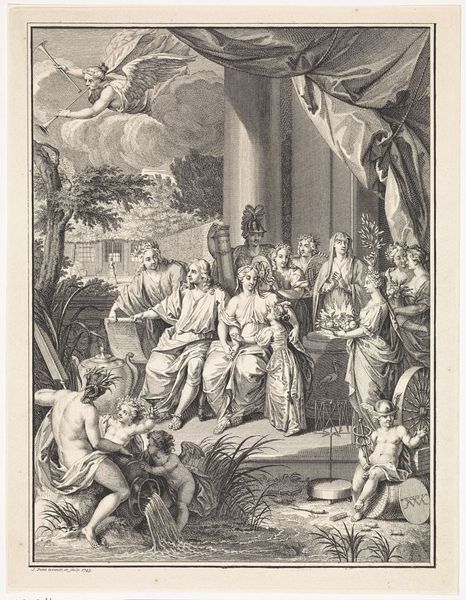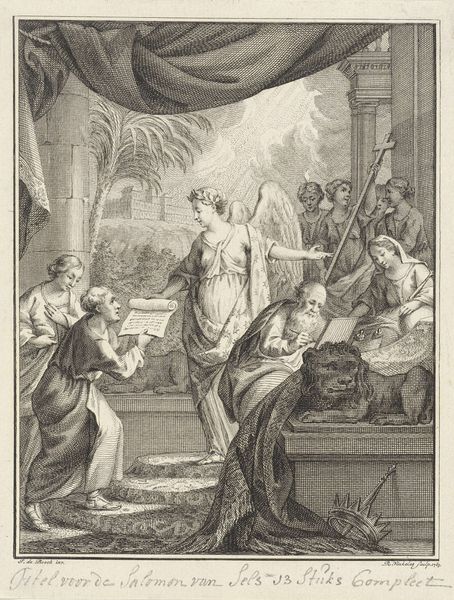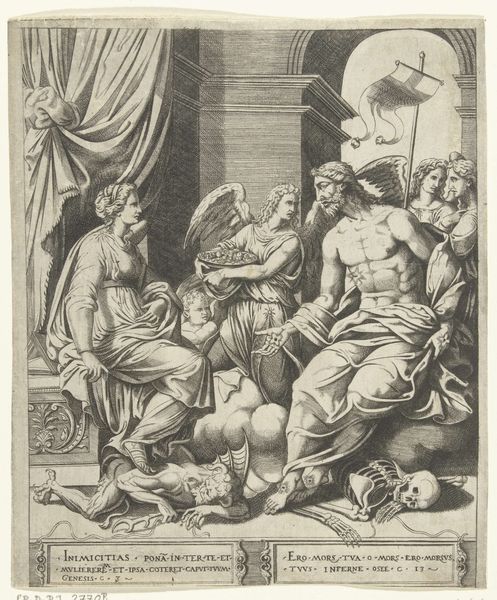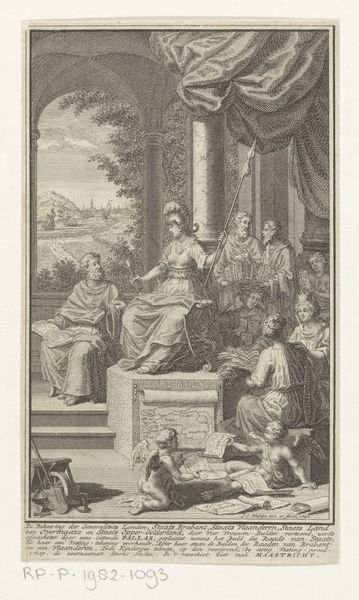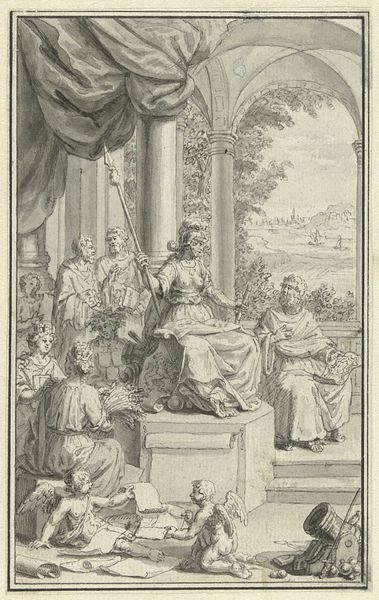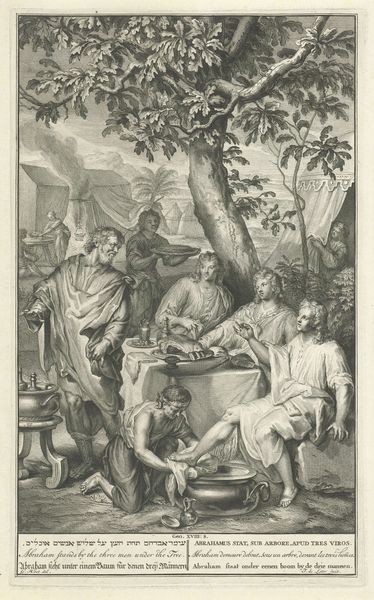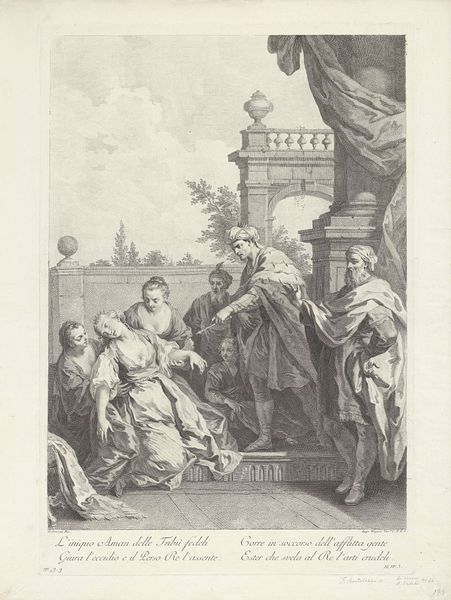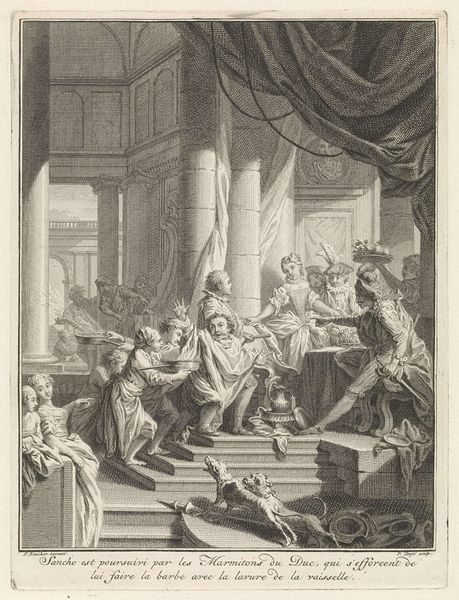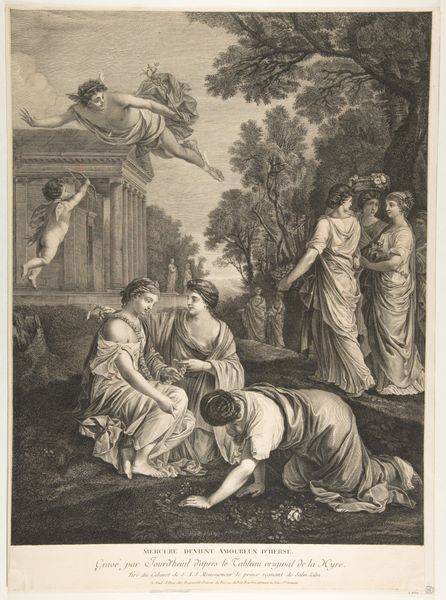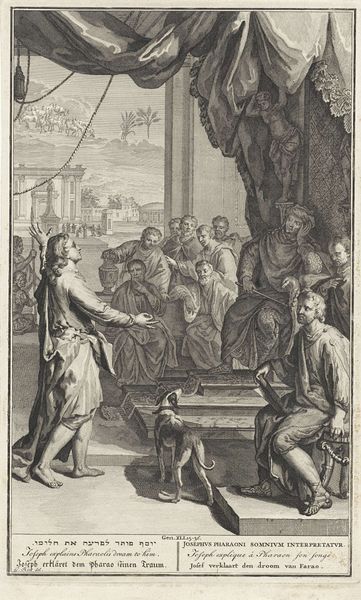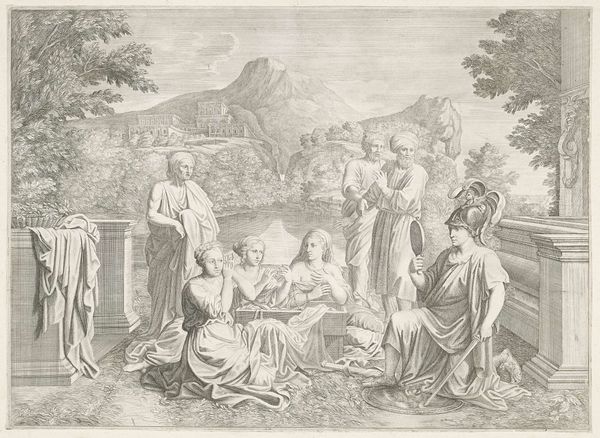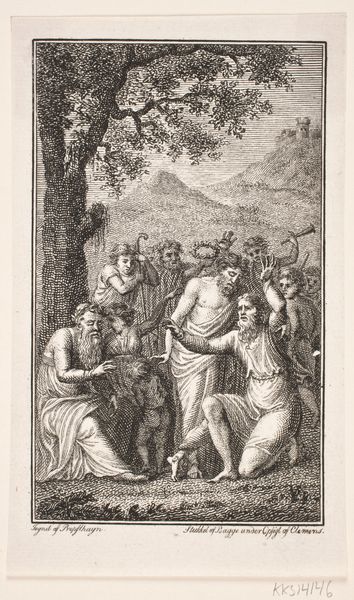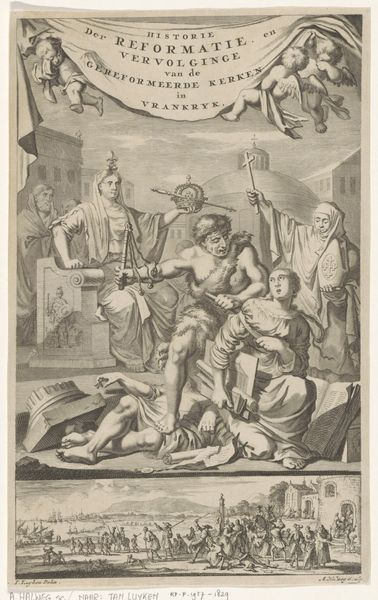
engraving
#
allegory
#
baroque
#
cityscape
#
history-painting
#
engraving
Dimensions: height 209 mm, width 160 mm
Copyright: Rijks Museum: Open Domain
Curator: The piece before us, crafted around 1750 by Jan Punt, is entitled "Allegorie op de Rotterdamse Handel," currently housed at the Rijksmuseum. It is an engraving. Editor: It has this striking clarity and crispness, common to engravings, yet the density of figures and symbols feels quite Baroque and crowded. It exudes formality but feels incredibly stiff and forced, doesn’t it? Curator: Yes, that stiffness you perceive aligns with its allegorical intention. The engraving depicts Rotterdam's trade through symbolic figures—consider the central female figure, likely representing the city itself, receiving tribute. Her precise gestures create an intriguing dynamism. Note, too, how this depiction uses verticality through architectural components like columns. Editor: I see those columns. But the entire lower left corner draws my eye - with figures emerging from this very turbulent water. The details on the boat the figures are sitting on and the details around the water are fascinating! And how does the choice of engraving impact the accessibility and distribution of this allegory, especially during the 18th century? Wouldn’t prints like this have circulated widely, reaching a broader audience than paintings? Curator: Precisely. The printmaking enables reproducibility, serving to disseminate and standardize civic values through the allegory presented. Examine the variety of figures. Those are merchants, I imagine, offering goods—each an emblem of global exchange and industry. And how those figures are depicted—through costume and pose—contributes to a visual vocabulary understood at the time. Editor: While those costumes might indicate a level of trade happening between vastly different groups of people, they may suggest a complicated, complex relationship where Rotterdam exploits groups in different parts of the world. Who made those materials, where were they shipped? Curator: That is absolutely valid - that perhaps it reflects both the triumph and inherent power structures of trade, doesn't it? In all, it invites ongoing assessment of history, power, and representation in art. Editor: And hopefully ongoing dialogues about labor, materials, and production as well.
Comments
No comments
Be the first to comment and join the conversation on the ultimate creative platform.
